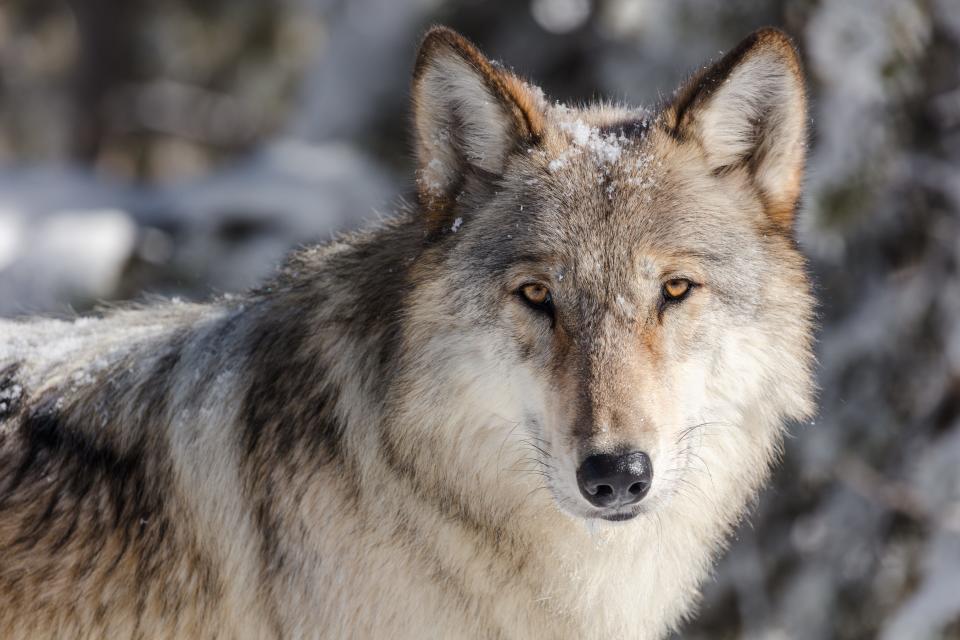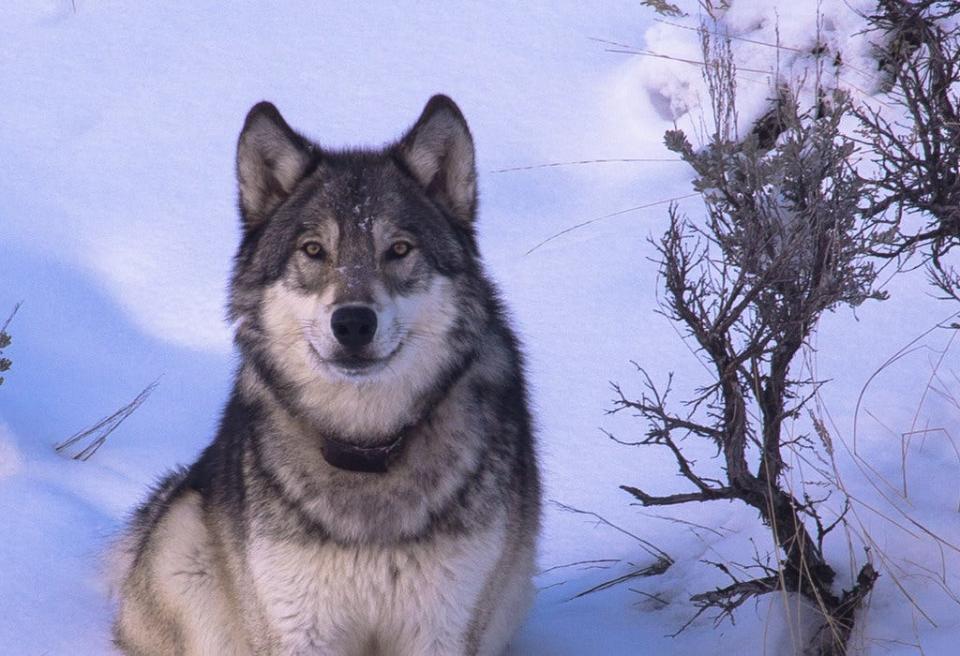Lawsuit calls for gray wolf protections in the American West. Could it affect New Mexico?
Federal wildlife managers in February opted to not list a segment of gray wolf populations in the northern Rocky Mountains as endangered, triggering a lawsuit this week by conservation groups including one from New Mexico that argued a listing would help prevent extinction amid efforts to rebuild the species in the state.
The gray wolf is listed as endangered in New Mexico and 44 other states, affording it federal protections in those states, and managed by state agencies in the other six states, mostly in the northern Rockies. Groups advocated to list a distinct population segment (DPS) in those states for added federal protections but were denied by the U.S. Fish and Wildlife Service which argued the species’ distribution and numbers meant it was not in danger of extinction in that area.
Gray wolves in the north could ultimately breed with subspecies Mexican gray wolves being managed in southern New Mexico and eastern Arizona in an experimental population area established by the agency. They’re native to New Mexico and other western states, and efforts to restore the species to its past population began in the 1970s when it was first listed as endangered.

More: Silverspot butterfly in northern New Mexico is 'threatened' amid climate change threats
Santa Fe-based WildEarth Guardians were one of 10 conservation groups that filed the lawsuit in U.S. District Court for the District of Montana calling for the court to vacate the decision to not list the species as a violation of the Endangered Species Act and remand the matter back to the agency for further consideration.
WildEarth Guardians Attorney Lizzy Pennock worried without federal protections, state-sanctioned wolf killings would further imperil the species.
“The U.S. Fish and Wildlife Service is supposed to be the backstop for imperiled species like the gray wolf,” she said. “Instead, the Service decided that wolves in the Western U.S. do not qualify for federal protections, while Montana, Idaho, and Wyoming openly try to ‘manage’ wolves to the brink of local extinction. Wolves, and the American people, deserve better from this agency.”
More: Oil and gas exempt from drilling rules in endangered bird habitat. Is species threatened?
In its Feb. 2 announcement, the Fish and Wildlife Service said a listing was not warranted for two petitions for wolf protections in the northern Rockies and the Western U.S. The agency said it planned to devise a nationwide gray wolf recovery plan by 2025. The service also reported there were 2,797 gray wolves in 286 packs across the Western U.S.
“This population size and widespread distribution contribute to the resiliency and redundancy of wolves in this region,” read the announcement. “The population maintains high genetic diversity and connectivity, further supporting their ability to adapt to future changes.”
Kelly Nokes, an attorney with the Western Environmental Law Center, argued the wolf was not well-distributed in the U.S., surviving only in small populations in Colorado and on the West Coast. She said the lawsuit sought to ensure adequate protections and expand the wolf back into its native range.
More: 'Lobos' recovering in New Mexico, feds say. Questions linger on genetic diversity.
“This legal challenge asks only for the protections needed for this iconic species to be rightfully restored across the West’s wild landscapes — protections that some states have shown only the Endangered Species Act can really provide,” Nokes said.

In New Mexico, restoration efforts led to a gradual increase in population – up 6 percent between 2022 and 2023 for the latest totals of 144 wolves in New Mexico and 113 in Arizona. But conservation groups argued the Fish and Wildlife Service, despite the rising numbers, failed to ensure genetic diversity needed for true recovery of the wolf.
That would mean allowing wolves to roam north to breed, potentially with populations like those in the Rocky Mountain area. Last year, state officials began releasing gray wolves in Colorado, drawing concern they could dominate the smaller Mexican gray wolves to the south.
“If the ranges of gray wolves and Mexican wolves expanded and eventually overlapped, the Mexican wolf population could be adversely affected by interspecific competition and hybridization,” read an environmental impact statement from the Fish and Wildlife Service.
Adrian Hedden can be reached at 575-628-5516, achedden@currentargus.com or @AdrianHedden on the social media platform X.
This article originally appeared on Carlsbad Current-Argus: Gray wolf listing called for in Western U.S. amid New Mexico recovery

